Imagine sailing on a boat, waiting to glimpse the coolest creatures in the ocean—orcas! Suddenly, a burst of excitement breaks the surface of the water. A playful group of killer whales appears with striking black and white colors. You watch in awe as they show off their swimming skills. There’s no doubt about it; this magical encounter will leave you with memories you’ll cherish forever. If you want to have your own orca adventure, you’ll want to know the right place to visit. Follow along to learn about 10 waters you might encounter killer whales and other killer whale facts.
Where Do Orcas Live?
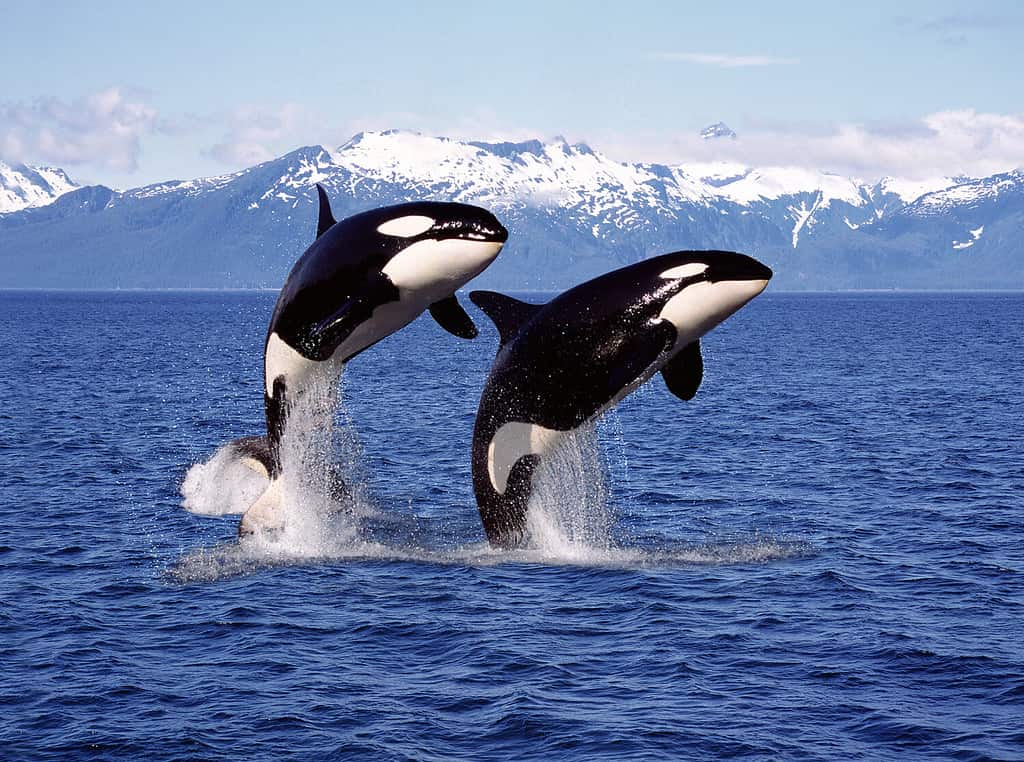
Killer whales live in every ocean but are most abundant in colder waters.
©slowmotiongli/Shutterstock.com
Killer whales, also known as orcas, are found in every ocean. They’re most abundant in colder waters like the Southern Ocean, which encircles the Antarctic. However, they can live in tropical and sub-tropical regions too. The Eastern North Pacific Ocean is home to the most well-studied killer whale populations: residents, transients, and offshores.
1. Resurrection Bay, Alaska

Killer whales love eating the salmon swimming around Resurrection Bay.
©iStock.com/John Pennell
Visit a stunning fjord in Alaska where killer whale watching is a dream come true—Resurrection Bay. This long, beautiful waterway on the Kenai Peninsula is the perfect spot to see killer whales in action. The best time to encounter killer whales is from mid-May to mid-June. These majestic creatures love to hang out here, especially when the salmon return for their spawning runs. The bay’s food-rich waters and closeness to the open ocean create an ideal playground for these intelligent creatures. They come here to feast on fish, especially silver salmon.
2. Bremer Canyon, Western Australia
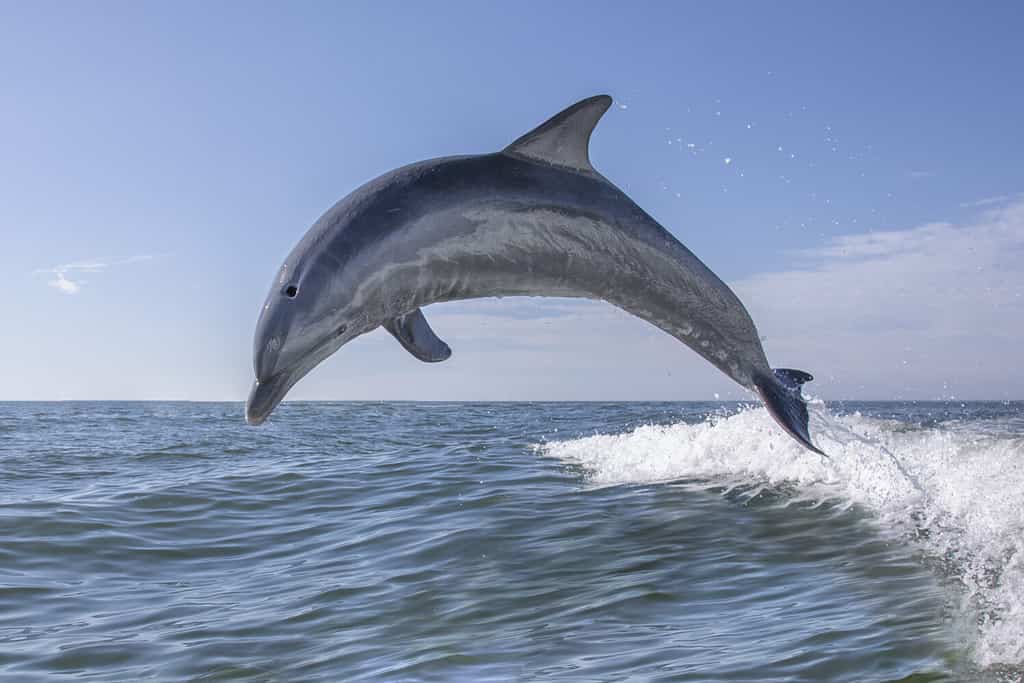
Killer whales and dolphins can be sighted at Bremer Canyon in Western Australia.
©Tory Kallman/Shutterstock.com
Head over to Bremer Canyon to spot killer whales in their wild habitat. Located off the coast of Bremer Bay in Western Australia, this deep sea canyon becomes a biological hotspot during a six-week period in summer. Killer whales, sharks, dolphins, sperm whales, and giant squid are among the creatures drawn to this area. This place is a paradise for birdwatchers, too, with albatross, shearwater, and petrel species soaring through the skies.
The discovery of this hotspot is relatively new, so scientists are still investigating what brings so much marine life to the canyon. We know that a cold, salty current from the Antarctic fills the canyon, attracting marine life with its salt-rich, nutrient-filled waters.
3. Vancouver Island, British Columbia
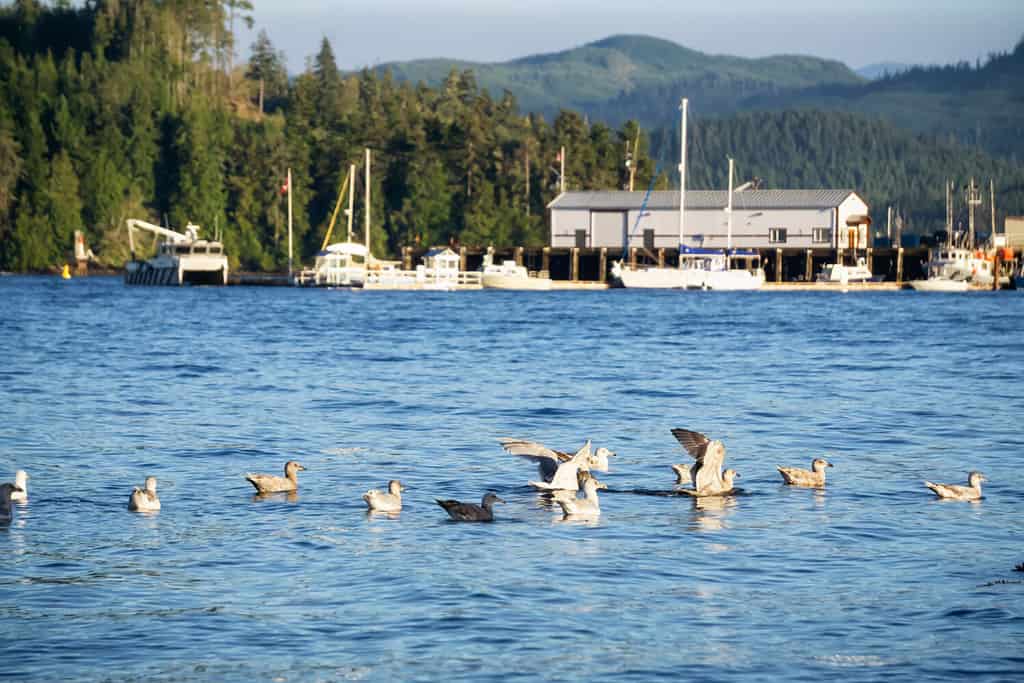
Telegraph Cove on Vancouver Island is a great place to see orcas.
©EB Adventure Photography/Shutterstock.com
Next up, the waters surrounding Vancouver Island in the Canadian Providence of British Columbia. Stretching over 285 miles long and 62 miles wide, it’s the largest island on the West Coast of North America. It’s also the most populated island between North America and New Zealand. Around 775,000 people live there.
To see orcas and humpback whales, then Telegraph Cove on Vancouver Island is the spot to be. It’s located along the northeast coast of Vancouver Island. The best time to visit is mid-June through September when the weather is just right for thrilling encounters with these majestic creatures. The protected waters of Johnstone Strait and the Broughton Archipelago become the summer home for around 200 whales. One of the most unforgettable ways to meet these gentle giants is by going on a kayaking tour.
4. South Georgia, British Overseas Territory

Killer whales prey on the penguins that live around South Georgia, an island in the Atlantic.
©Dennis Stogsdill/Shutterstock.com
Another great place to encounter killer whales is South Georgia, an island in the South Atlantic Ocean. This area is renowned for having the densest concentration of marine mammals and birds on the planet, earning it the nickname “Serengeti of the Southern Ocean.”The island’s waters are rich feeding grounds for whales, including humpback, fin whales, and orcas. During the breeding season, the island becomes home to millions of seals, penguins, and seabirds. There are even four species of penguins, including gentoos, chinstraps, macaronis, and the majestic king penguins.
South Georgia resides in the Southern Ocean; it sits in the southern part of the Southern Ocean, east of the southern tip of South America. Trips here are often combined with visits to the Antarctic Peninsula and the Falkland Islands to allow for further exploration of the Southern Ocean region. So after leaving South Georgia, head over to Sea Lion Island in the Falklands.
5. Sea Lion Island, Falklands

Killer whales target sea lion pups learning to swim in shallow rock pools.
©B Norris/Shutterstock.com
What’s another one of the best places to encounter killer whales? Sea Lion Island in the Falklands. This is a favorite hangout for killer whale pods, especially during the summer. Food sources are plentiful. In the summertime, sea lion pups learn to swim in shallow rock pools. If you’re patient, you might even glimpse killer whales sneaking into the rock pools where the elephant seals play. While there, you can also spot whales, dolphins, sea lions, and giant elephant seals hanging out along the shores.
Birders and nature enthusiasts will be in paradise here. The Falkland Islands have a whole bunch of other amazing wildlife too. There are hundreds of recorded bird species, including penguins like Gentoo, Magellanic, Rockhopper, Macaroni, and King Penguins. For adorable Magellanic penguins, check out Carcass Island, and if you want to see four penguin species in one spot, go to Saunders Island.
6. San Juan Islands, Washington
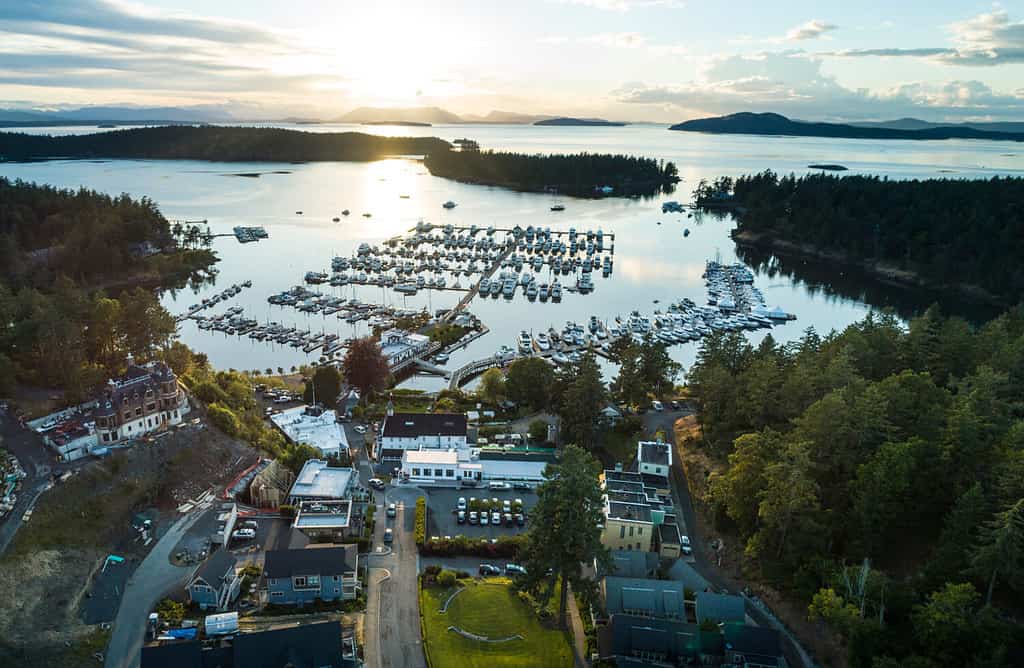
The San Juan Islands are in the Salish Sea; it’s a must-visit location for killer whale watching.
©Cascade Creatives/Shutterstock.com
The San Juan Islands are part of the beautiful natural landscape of the Pacific Northwest. These islands have more marine shorelines than any other county in the country. The area is world-renowned for orca whale watching and sea kayaking opportunities in the Salish Sea. To reach this scenic spot, you can take a 90-minute drive from Seattle to Anacortes, followed by a brief ferry ride across the Sound to Friday Harbor. From Friday Harbor, numerous whale-watching outfitters offer daily excursions to venture out. During the summer, ferries usually connect Port Townsend, Bellingham, and Seattle with the Islands. If you prefer to fly, the islands are only a half-hour seaplane flight from Seattle.
7. Remote Fjords of Northern Norway

Killer whales frequent Northern Norway in the winter for herring migration.
©Miguel Schmitter/Shutterstock.com
Are you excited to see some amazing orcas in Northern Norway? Head to the remote fjords just north of Tromsø, above the Arctic Circle at around 70 degrees north. That’s where the orca magic happens. The best time to spot orcas is from the end of October to mid-January. But be careful; December can be hit-and-miss due to less daylight up north. The best way to see orcas is on a whale-watching expedition cruise. You’ll be on a small ship cruising the fjords for days, searching for orcas and other whales. They know the best spots where calm animal groups hang out, away from other boats.
Why do orcas come to Norway in winter? It’s all about the herring migration. Every winter, lots of herring migrate to the fjords. And the orcas and other whales follow this delicious food source. When hunting herring, orcas often use a clever carousel feeding technique. They surround the herring, making them form a tight ball, and then use their powerful tail flukes to slap and paralyze several fish at once.
8. Bellingham, Washington
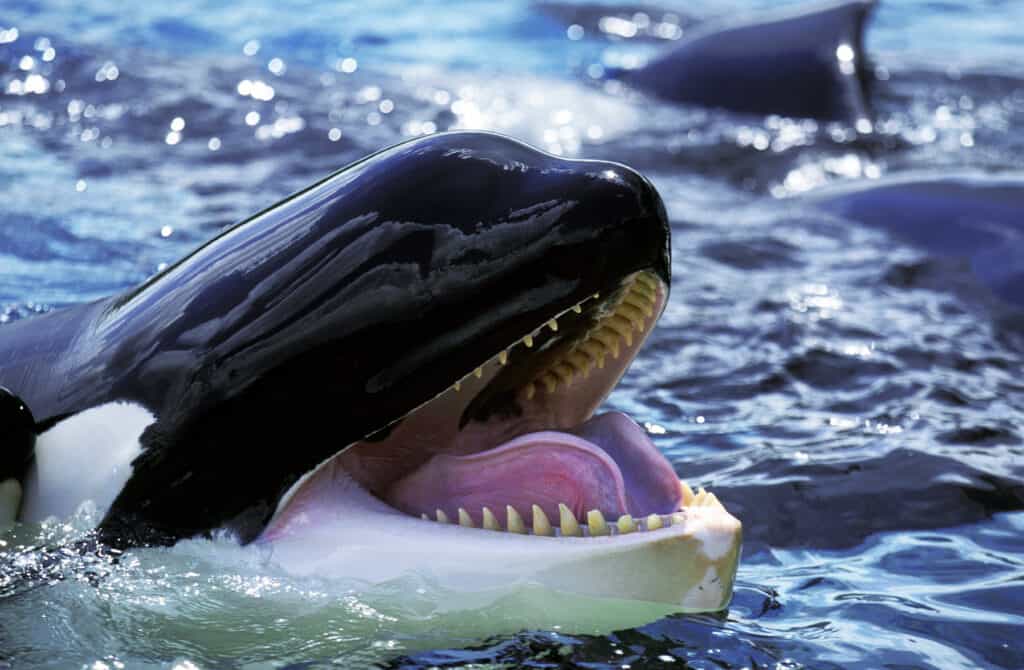
You can see orcas and humpbacks at Bellingham, a city in Whatcom County, Washington state
©slowmotiongli/Shutterstock.com
If you love whales, you should visit Bellingham, a city in Whatcom County, Washington State. It’s a fantastic place in the northern region near Mount Baker, where exciting wildlife adventures on the Salish Sea await. This spot is home to special groups of resident killer whales, who love devouring the salmon there. These amazing creatures live here all year round. There are also nomadic mammal-eating orcas that pass through the area.
Start your adventure by hopping on a whale-watching boat from the downtown waterfront or Fairhaven Cruise Terminal. Keep an eye out for solitary minke whales cruising through the waters along with orcas. During their coastal migration, majestic gray and humpback whales often make scenic side trips in the region too.
9. Seattle, Washington

The shores of Alki Beach in West Seattle are perfect for killer whale watching.
©Beach Creatives/Shutterstock.com
Head to Seattle, another Washington city, to spot killer whales. Seattle is in the Pacific Northwest of the United States. You can try whale watching from the shore at Alki Beach in West Seattle. It’s a popular spot for seals and their adorable pups, making it a draw for Orcas.
There are different kinds of whales you might spot during your tour. There are mammal-eating orcas who love hunting for harbor seals and porpoises. Then there are the southern resident orcas, which you can often see from May to October. You can even spot humpback whales all year round in the Pacific Northwest. And in the late spring and early autumn, keep an eye out for minke whales and California sea lions hunting for salmon.
10. Monterey Bay, California
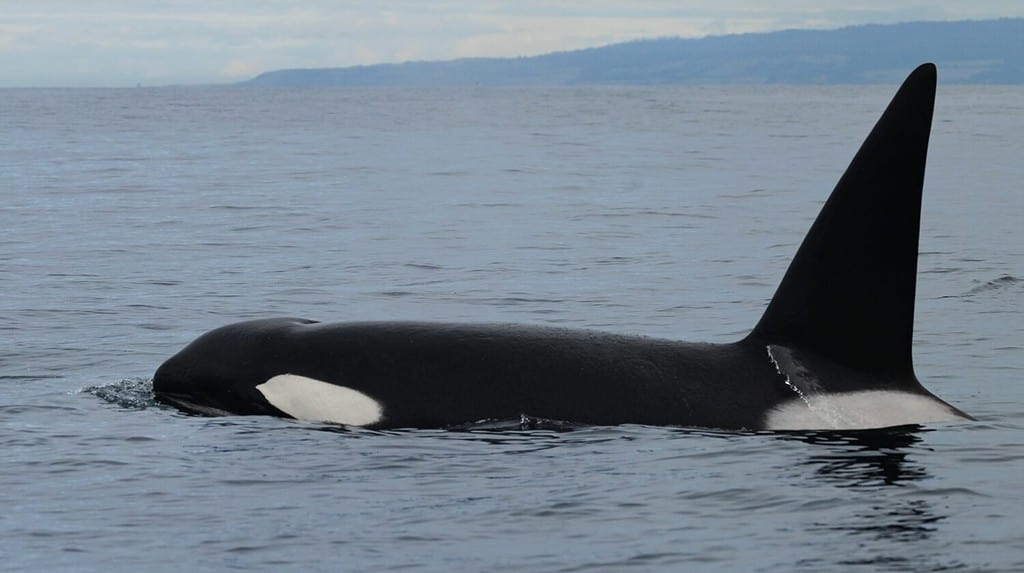
Killer whales love swimming around the deep waters of Monterey Bay, California.
©Erin Underwood/Shutterstock.com
Monterey Bay, California, has the biggest and deepest submarine canyon on the west coast. This makes it a perfect home for deep-water whales and dolphins that love to hang out close to the coast. Here you can spot killer whales, sea lions, harbor seals, sea otters, and seabirds.
Some tour companies offer extended trips to see killer whales throughout April and May. That’s when these whales are on the move, hunting gray whale calves. Extended trips can last 6 hours or longer. They’re perfect whale enthusiasts, photographers, and bird watchers, especially those who love pelagic birds.
Tips for Killer Whale Encounters in the Southern Ocean
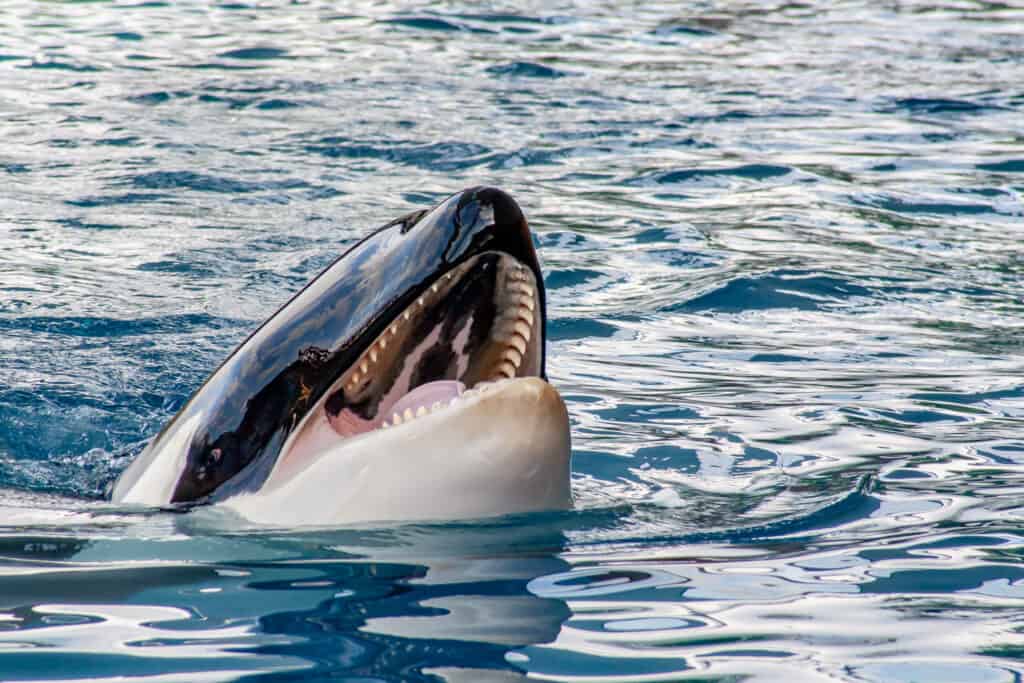
You can experience killer whale encounters in a boat, zodiac (inflatable boat), or kayak.
©Guillermo El Oso/Shutterstock.com
In the southern hemisphere, summer is from March to May. Typically, February and March are the best time to see whales swimming near Antarctica. There are several ways to enjoy whale watching in Antarctica. One option is to observe the whales from the deck of a ship, which provides a better viewing angle and allows you to witness these incredible creatures in their natural habitat. The ships are usually equipped with experienced guides who can offer insights into the behavior and biology of the whales.
For a more immersive experience, you can join guided zodiac tours. These small, inflatable boats can get you closer to the action, allowing you to witness the whales breaching, diving, and swimming just meters away. It provides an intimate experience with marine life while maintaining a safe distance to ensure the well-being of the animals.
For adventurous and nature-loving individuals, kayak programs might be available, providing a chance to encounter whales at the water level. Observing these gentle giants from a kayak allows you to experience their movements in complete silence, creating an even deeper connection with the natural environment.
What to Expect
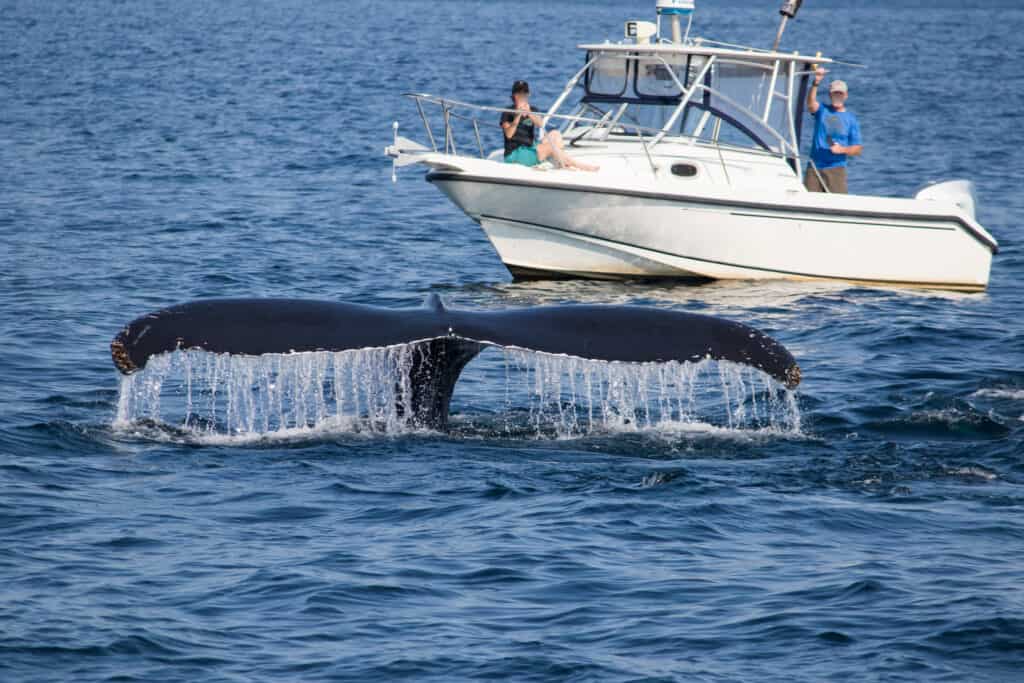
Whale watching takes patience; you never know when a whale will make an appearance.
©Mircea Costina/Shutterstock.com
The key to whale watching is patience. Whale-watching can be a thrilling experience, but it’s also a waiting game. Avoid setting expectations and let the day unfold as it’s meant to. You might get lucky and spot whales quickly. Or it might take hours before you see a single fin. Instead of rushing things, dedicate a few hours to the search, as every trip is different. Depending on the time of day, season, and the type of whales you hope to see, it may take some time to locate the whales and observe their behaviors.
How long will you be out on the water? That depends on the type of expedition you’re booking. Find out if it’s an all-day, half-day, or extended tour. Whale-watching tours typically last 1 to 3 hours, depending on the specific cruise or tour. Even if you don’t see any whales, you’ll learn a lot about the area you’re in. Tour guides are usually knowledgeable about marine life and whales and should be available to answer any questions you may have during the trip.
Essentials to Bring
As you embark on your killer whale-watching adventure, being well-prepared can make all the difference in ensuring a memorable and enjoyable experience. What should you bring on your killer whale-watching adventure?
Here’s a list of the essentials you won’t want to be without:
- Water-resistant jacket
- Sun protection
- Reusable water bottle
- Boat or water shoes
- Waterproof camera/phone
- Binoculars
- Motion sickness aids
It’s important to stay hydrated during the trip. Bring a reusable water bottle and keep sipping on water throughout the day. Hydration will keep you feeling fresh and energized as you search for those amazing whales. Along with your reusable water bottle, it’s also wise to bring some energy-boosting snacks like granola bars, fruits, or nuts. Whale-watching trips can be lengthy, and having a quick bite to eat can keep your spirits up.
Lastly, don’t forget to bring a little extra money for the tour guide. A small gratuity is a nice way to show them how much you appreciated the experience. They work hard to make your trip unforgettable, so a thank you goes a long way.
More About Killer Whales
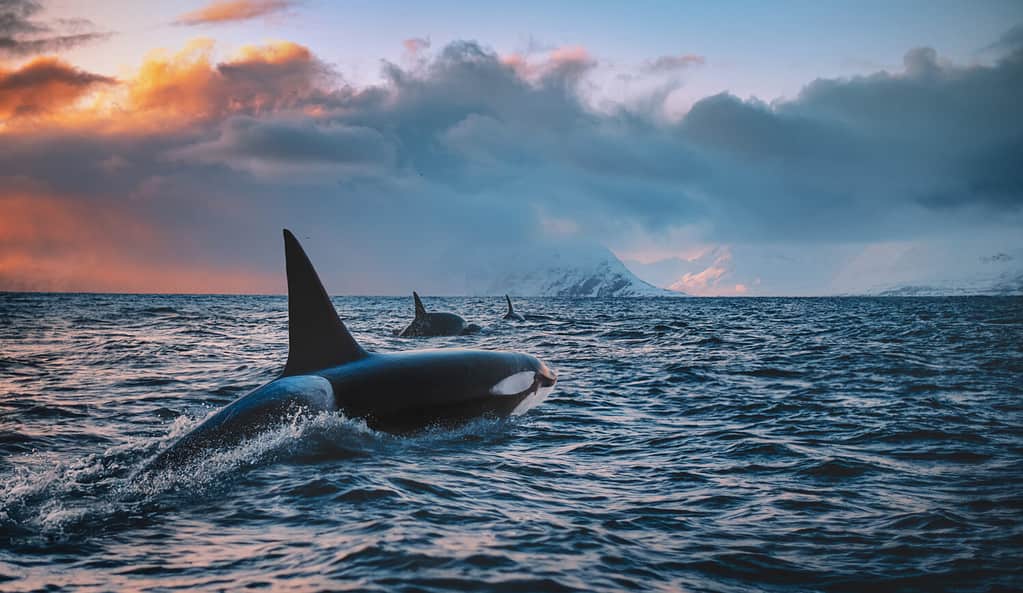
Killer whales eat a wide variety of marine mammals, sometimes even targeting sharks and other whales.
©Willyam Bradberry/Shutterstock.com
One of the most impressive aspects of killer whales is their role as top predators in the marine ecosystem. These intelligent and powerful hunters are the largest carnivores on Earth. They’re fearless and can even take on penguins, seals, sharks, and sometimes large baleen whales. Their diverse diet showcases their adaptability and ability to switch hunting strategies based on the available food sources in different regions.
Despite not being as huge as the great baleen whales, killer whales rule the Antarctic food chain. How do they do it? Belonging to the Odontocetes group, killer whales are distinguished as toothed whales. Orcas possess an impressive set of teeth made for grasping and tearing prey.
Another reason they’re so successful has to do with their hunting strategies. They’re not just solitary hunters; they work together in packs called “pods,” making their hunting skills even more incredible. Pods, consist of 5 to 100 members, with different regions having different averages. For instance, Alaskan pods tend to have fewer than 40 whales. These pods resemble close-knit families; every member of the group plays a role in ensuring the pod’s survival.
What Are Resident, Offshore, and Transient Killer Whales?
Some of the best-studied killer whale populations live in the North Pacific. The Pacific Northwest region includes the states of Washington, Oregon, and sometimes parts of northern California and southern British Columbia in Canada. In the North Pacific are resident, transient, and offshore killer whales—the most extensively studied killer whale populations. Each ecotype is genetically distinct with its own diets, appearances, habitats, and behaviors.
Resident killer whales are frequently observed from California to Russia. Offshore killer whales can occasionally be seen inshore but have a vast range, sometimes venturing over nine miles offshore. The transient killer whales also share their coastal water habitat with resident and offshore killer whales.
What Are Type A, B, and C Killer Whales?
In the Antarctic, killer whales have five special classification groups. The three most popular categories are types A, B, and C. Each group of killer whales has its preferred stomping grounds. Type A killer whales prefer to live offshore in ice-free waters, like the northeast Atlantic and Great Britain. They exhibit migratory behavior, entering Antarctic waters during the austral summer.
Type B killer whales inhabit inshore Antarctica and the Antarctic Peninsula. You can spot them off the west coast of Ireland and Scotland. Also known as Antarctic killer whales, type B whales undertake impressive migrations covering over 5,800 miles round trip. There’s a reason behind this long ocean trip: reaching warmer temperatures helps them conserve energy as they regenerate their skin since the heat loss is less in warmer waters.
Finally, type C killer whales live in inshore waters and pack ice, and they’re most commonly found in the eastern Antarctic. Type C or Ross Sea Killer Whales primarily eat fish, making them piscivores. They hunt fish closely, following channels or openings in the pack ice to find their prey.
Final Thoughts
So, to wrap it all up, if you’re on the hunt for unforgettable encounters with killer whales, there are numerous places to plan your visit: In Resurrection Bay, Alaska (mid-May to mid-June), marvel at killer whales feasting on salmon. You could also head to Bremer Canyon, Australia, for killer whale tours during the summer. You can witness killer whales during Northern Norway’s herring migration from late October to mid-January. And for the ultimate adventure, explore Antarctica (November to February) and witness killer whales in one of the world’s most pristine environments. Embark on a killer whale adventure, and let these awe-inspiring creatures spark your soul.
The photo featured at the top of this post is © slowmotiongli/Shutterstock.com
Thank you for reading! Have some feedback for us? Contact the AZ Animals editorial team.







